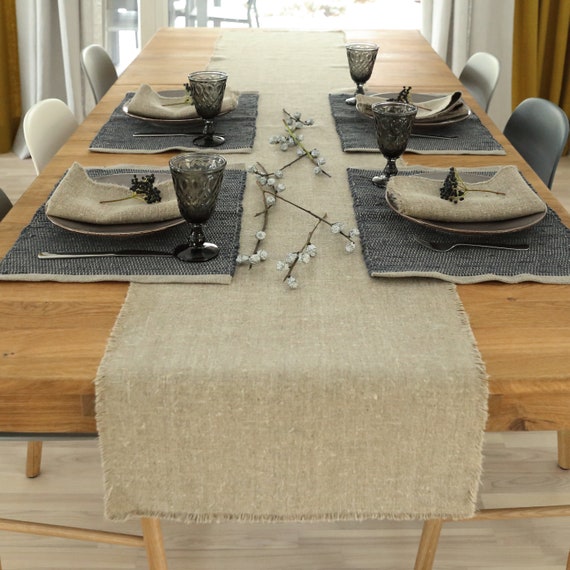Bed Linen Fabric Technologies: Discovering Modern Trends and Creative Applications in Design and Textile Market
From sustainable production methods to innovative weaving modern technologies, the evolution of bed linen is improving the landscape of the fabric sector. As we dig right into the worlds of imaginative style applications and the introduction of bed linen blends and hybrid textiles, a brand-new phase unravels in which bed linen's role in future fabric technologies takes facility stage.
Sustainable Practices in Linen Manufacturing
Lasting methods in bed linen manufacturing have become significantly vital in the textile sector's initiatives to reduce ecological impact and advertise honest sourcing methods. Linen, an all-natural fiber originated from the flax plant, offers a variety of advantages such as biodegradability, resilience, and breathability. However, conventional methods of linen manufacturing can include significant water intake, pesticide usage, and energy-intensive procedures.
To deal with these obstacles, numerous fabric manufacturers are embracing lasting methods throughout the bed linen manufacturing process. This consists of sourcing flax from natural farms that prevent harmful chemicals and chemicals, carrying out water-efficient retting strategies to extract fibers from the flax stalks, and using environment-friendly dyes and coatings. Additionally, some business are purchasing eco-friendly power sources to power their production centers and reducing waste with recycling and upcycling efforts.
Technical Advancements in Linen Weaving
With the growing focus on lasting practices in linen production, the textile market is currently observing a rise in technical innovations specifically focused on transforming the art of linen weaving. These advancements are improving the means bed linen materials are created, supplying raised efficiency, quality, and creativity in weaving techniques.
One of the key technological developments in bed linen weaving is the combination of electronic looms. These advanced looms are equipped with software program that enables for complicated and complex styles to be woven with precision. By digitizing the weaving process, manufacturers can attain better uniformity and precision in their linen fabrics.
Additionally, developments in yarn spinning modern technology have actually allowed the production of finer and even more sturdy linen yarns - table cloths. This causes softer and smoother bed linen materials that retain their top quality also after multiple usages and cleans
Furthermore, the development of environmentally friendly dyeing procedures and coatings for bed linen materials is acquiring grip. These sustainable practices not just decrease the ecological effect but additionally deal with the increasing consumer demand for fairly created textiles.
Creative Layout Applications for Linen
Innovative creative strategies are progressively forming the imaginative design applications for linen in the fabric sector. Bed linen's natural aesthetic charm and capacity to mix with other materials make it a favored choice for producing one-of-a-kind garments and accessories that cater to the eco conscious consumer.
Furthermore, designers are try out linen in home design, utilizing its sturdy and breathable nature to craft stylish furnishings such as drapes, bed linens, and furniture. The appearance and drape of bed linen bring a feeling of elegance and comfort to interior rooms, including a touch of sophistication to modern homes.

Bed Linen Blends and Hybrid Fabrics

Crossbreed fabrics, on the other hand, take the idea of mixing a step further by including extra elements such as metal threads, recycled products, or conductive fibers. These cutting-edge textiles not just broaden the design opportunities however additionally present functional elements click like conductivity, antimicrobial homes, or enhanced longevity. Hybrid fabrics are significantly being utilized in numerous industries, consisting of fashion, indoor layout, and technical fabrics, where the demand for multifunctional products gets on the rise.
Bed linen's Role in Future Fabric Innovations

In the world of future fabric innovations, linen is expected to be a crucial gamer in the development of advanced practical materials. Scientists and developers are discovering ways to enhance linen's fundamental high qualities with technical innovations, such as including clever fabrics, nanotechnology, and performance finishes. These innovations aim to elevate linen's performance characteristics, making it suitable for a wider variety of applications, from activewear to protective clothes.
Furthermore, the combination of linen with other natural or artificial fibers opens countless opportunities for producing novel textiles with distinct residential properties and performances. By leveraging linen's characteristics and exploring ingenious blends, the textile industry is positioned to present interesting advancements that deal with evolving customer requirements and sustainability demands.
Conclusion
To conclude, the expedition of sustainable practices, technological innovations, innovative design applications, bed linen blends, and its duty in future textile developments highlight the continual advancement of linen fabric in the modern-day style and fabric market. With a concentrate on innovation and creative thinking, the flexibility and environmentally friendly nature of bed linen make it a useful material for developers and makers alike, paving the way for more advancements and developments in the field of fabrics.
As we dig into the worlds of innovative more design applications and the introduction of linen blends and crossbreed materials, a new phase unfolds in which bed linen's function in future textile advancements takes facility stage.
Exploring the blend of linen with various other fabrics has actually led to the development of cutting-edge blends and hybrid fabrics in the contemporary fabric industry. Linen blends offer a distinct mix of the qualities of bed linen with those of other fibers, resulting in materials that possess improved residential or commercial properties such as raised sturdiness, boosted draping, and reduced wrinkling.The development of bed linen blends and crossbreed fabrics has established the phase for Linen to play a critical function in driving future fabric technologies.In the realm of future textile advancements, bed linen is expected to be an essential gamer in the growth of advanced functional fabrics.